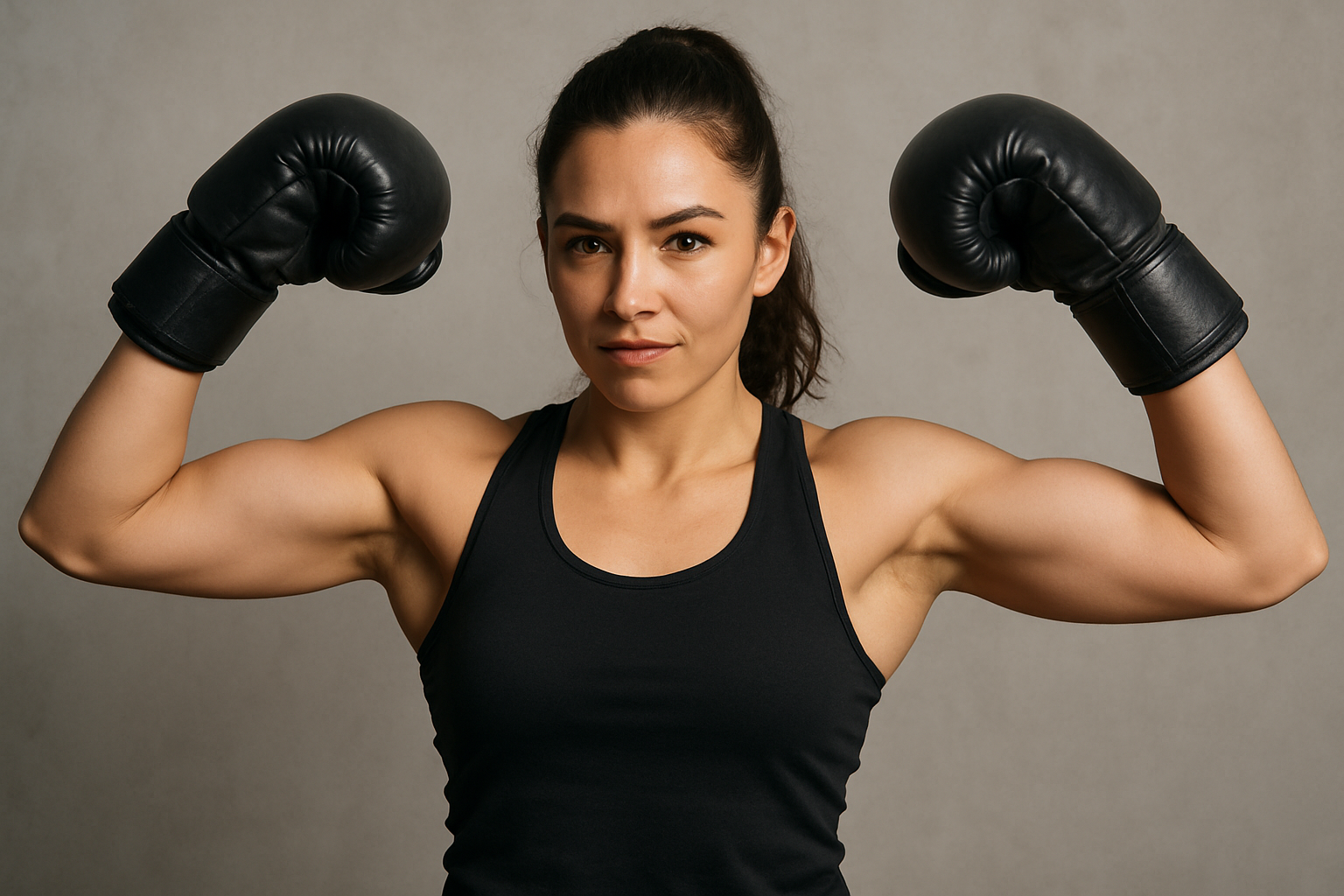Throwing punches is only one aspect of boxing; it’s a full-body workout that works muscles you may not have even realized you possessed.. Whether you’re training for a fight, staying fit, or just curious about how boxing shapes your body, you’re in for a detailed look. Strength, power, speed, and endurance are all necessary for boxing, so every time you enter the ring or hit the bag, your muscles are put to the test. What specific muscles are used in boxing, then? We should dissect it, muscle by muscle.
1. Upper Body Muscles Used in Boxing
Shoulders (Deltoids)
Every punch you throw relies heavily on your shoulders. The deltoids are constantly active—whether you’re jabbing, hooking, or throwing uppercuts. Boxing workouts, including shadowboxing, mitt work, and bag work, condition these muscles to endure repetitive motion and maintain power.
- Key Benefit: Improved endurance and muscle tone in the shoulders.
- Best Drill: Double-end bag drills and speed bag routines.
Arms (Biceps and Triceps)
Your biceps are used when you retract your punches quickly, and your triceps power your punch forward. Every straight punch or uppercut puts your triceps to work while defensive movements like blocking and parrying engage your biceps.
- Key Benefit: Increased definition and strength in upper arms.
- Best Drill: Heavy bag workouts and resistance band shadowboxing.
2. Chest and Back Muscles
Chest (Pectorals)
Boxers use their pectorals to generate force in punches. A strong chest helps in explosive movements like jabs and crosses. The more powerful your chest muscles, the harder your punches hit.
- Key Benefit: Better punch power and torso strength.
- Best Drill: Push-ups and medicine ball chest passes.
Back (Lats and Trapezius)
Strong lats (latissimus dorsi) are essential for punch recoil, helping you snap back faster after each punch. During combos and blocks, the trapezius muscle helps to regulate arm movement and maintain posture.
- Key Benefit: Improved posture, punch recovery, and balance.
- Best Drill: Rowing exercises and pull-ups.
3. Core Muscles Worked in Boxing
Abdominals (Rectus Abdominis & Obliques)
Your abs and obliques are constantly firing during boxing. Whether you’re rotating for a hook or absorbing a body shot, your core acts as your stabilizer. Punching power originates from the core—not just the arms.
- Key Benefit: Enhanced rotational power and torso stability.
- Best Drill: Russian twists, planks, and medicine ball slams.
Lower Back (Erector Spinae)
All rotation and movement of the upper body are supported by the lower back.. A strong lower back prevents injury and enhances balance and movement efficiency.
- Key Benefit: Better support for fast footwork and body movement.
- Best Drill: Back extensions and bridges.
4. Lower Body Muscles Used in Boxing
Legs (Quads, Hamstrings, Glutes, and Calves)
Boxing is rooted in footwork. Your hamstrings and quadriceps propel you forward and backward, while your glutes provide you strength when you rotate and move laterally.. Calves keep you light on your feet, helping with agility and bounce.
- Key Benefit: Explosive movement, balance, and agility.
- Best Drill: Jump rope, squats, and footwork drills.
5. Cardiovascular and Endurance Benefits
While not a muscle group in itself, boxing conditions your cardiovascular system like no other. High-intensity rounds followed by short breaks mimic real fight conditions, boosting lung capacity and heart health. This improves muscular endurance across all muscle groups.
6. Is Boxing a Full Body Workout?
Absolutely. Boxing works nearly every muscle in your body—from your fists to your feet. Punching involves your arms, chest, and core, while dodging, slipping, and footwork depend on strong legs and fast reflexes. When done right, boxing training can help you:
- Burn fat and build lean muscle.
- Develop explosive power and speed.
- Increase stamina and cardiovascular strength.
- Build functional strength useful in real-life scenarios.

7. Muscle Recovery in Boxing Training
Because boxing training is intense, recovery is crucial to avoid injury and encourage muscle growth. Including dynamic stretching, hydration, proper nutrition, and rest days into your schedule ensures your muscles recover and rebuild stronger.
- Pro Tip: Incorporate foam rolling, massage therapy, and sleep for optimal recovery.
8. Best Strength Training Exercises for Boxers
Incorporating strength training to complement boxing helps improve muscle performance:
- Deadlifts: Great for full-body strength and core engagement.
- Kettlebell Swings: Enhances hip mobility and power.
- Pull-Ups: Builds back and shoulder strength.
- Bulgarian Split Squats: Improves leg strength and balance.
Boxers who strength-train recover faster, hit harder, and maintain lean muscle mass better than those who don’t.
9. Does Boxing Build Muscle or Burn Fat?
Both. While it’s not purely a hypertrophy (muscle-building) sport like bodybuilding, boxing is effective at building lean, dense muscle due to the high-intensity, explosive nature of training. Simultaneously, it’s one of the most effective fat-burning workouts, torching up to 800 calories per hour.
- Key Tip: Combine boxing with a high-protein diet and you’ll build muscle while shredding fat.
10. Boxing Muscle Imbalances & How to Fix Them
Because boxing is repetitive and sometimes one-sided, it can lead to muscle imbalances—like overdeveloped front delts or tight hip flexors. That’s why cross-training is important:
- Stretch often, especially hips, shoulders, and hamstrings.
- Work both sides of the body equally.
- Incorporate resistance bands to strengthen stabilizers.
FAQs About Muscles Worked in Boxing
1. Can boxing replace gym workouts?
Yes, boxing can be a complete workout on its own, offering both cardiovascular conditioning and muscle toning. However, combining it with strength training yields better muscle-building results.
2. Does boxing give you abs?
Absolutely. Boxing strengthens your core through rotation, impact, and stabilization. Combined with a good diet, boxing can reveal and define abdominal muscles over time.
3. What muscle is most important in boxing?
The core is arguably the most critical. It links the upper and lower body, generating punch power and supporting every movement, from slips to pivots.
4. Can you get ripped from boxing?
Yes. Boxing helps build lean muscle and burn fat, which leads to a more toned and “ripped” appearance—especially with a clean diet and consistent training.
5. Is boxing good for leg day?
Yes. The constant footwork, movement, squats, and explosive direction changes make boxing excellent for working the legs and improving agility.


